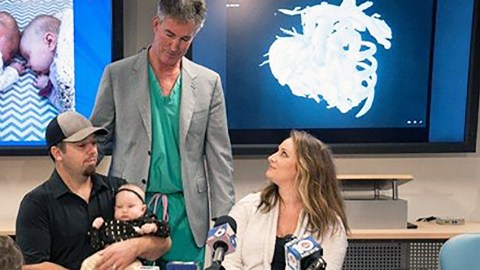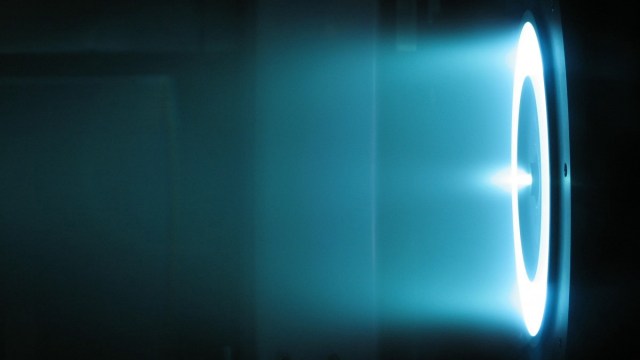This Young Girl’s Life Was Saved By Google’s Low-Cost Virtual Reality Device

A four-month–old little girl is alive today because of a cheap virtual reality device made by Google. Teegan Lexcen was born in August with only one lung and missing almost the entire left half of her heart. Teegan’s doctors in Minnesota, where she was born, advised her parents that there wasn’t much they could do. They sent her home to die. Now, she’s recovering in a hospital in Miami, where a team of doctors used Google’s Cardboard VR to save her.
Google Cardboard provides an inexpensive way to experience virtual reality. As the name implies, the device is made from corrugated cardboard that the user folds up to create a VR headset. According to Google, “Cardboard brings immersive experiences to everyone in a simple and affordable way. Whether you fold your own or buy a Works with Google Cardboard-certified viewer, you’re just one step away from experiencing virtual reality on your smartphone.”
With a price range around $17.50 – $30.00 USD, these devices can give anyone a taste of virtual reality without the expense of the Oculus Rift, which runs about $600 USD, or the Samsung Gear VR which goes for around $100 USD.
What makes this so exciting is that Google’s foray into virtual reality not only allows access to the technology in a cheaper way, but also proves the value that virtual reality technology brings to disciplines like medicine. Just ask Lexcen’s parents.
“It was mind-blowing,” her mother, Cassidy Lexcen, told CNN. “To see this little cardboard box and a phone, and to think this is what saved our daughter’s life.”
Through the happenstance discovery of an article on the top innovative pediatric surgeons, Teegan’s family contacted the doctor third on the list: Dr. Redmond Burke, the chief of cardiovascular surgery at Nicklaus Children’s Hospital in Miami. He had used innovative technology before. Dr. Burke and Dr. Juan Carlos Muniz, a colleague who specializes in imaging, previously used 3D printing in complicated cases that required them to create models of patient hearts — cases like Teegan’s. Unfortunately, in this case, the 3D printer had gone on the fritz. It was broken, so they couldn’t use it to model Teegan’s heart.
Dr. Muniz had an idea however. Using an app called Sketchfab, Muniz downloaded pictures of Teegan’s heart into the app. Using Google Cardboard to look at those pictures in Sketchfab gave the doctors a 3D representation of Teegan’s heart. They could see it from all angles, turn it around, and to some degree peer at Teegan’s heart from the inside.
“Dr. Juan-Carlos Muniz who runs our MRI program came to me two weeks before surgery and handed me a piece of cardboard with a smartphone in it,” Burke told UploadVR. “I looked inside and just by tilting my head I could see the patient’s heart. I could turn it. I could manipulate it. I could see it as if I were standing in the operating room.”
Heart Scan LQ by iprototypedit.com on Sketchfab
Additionally, Google Cardboard provided a very specific advantage over the 3D printer. In preparing for surgery, the doctors had to make a series of decisions related to how to open Teegan’s chest cavity and what to do about surgical complications related to her right and left ventricles. In both cases, Google Cardboard gave them a view of the heart (and the other organs around it), that surpassed what a 3D printer could do. Indeed, Burke invented a new type of surgery as a result.
The next day, when Burke conducted the surgery, the heart looked exactly as it had been displayed via Google Cardboard. “Sometimes that’s what makes the difference between life and death,” he told CNN.
A few weeks ago, I argued that we should approach virtual reality with a bit of cautious optimism, with deliberate carefulness. In some ways, I still hold to that argument. But, in this case, when time is crucial to the survival of a person, I say full speed ahead.
“I don’t like to go back and rethink what could have happened, but I will say that this technology allowed us to perform the operation quicker and with much less trauma to the patient,” Burke said.





